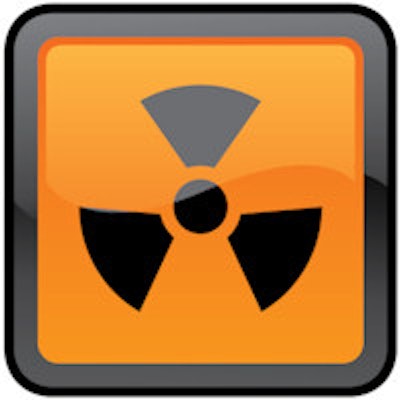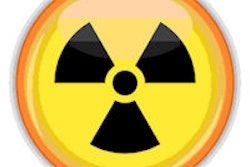
By changing its scanning protocols, an Ohio hospital was able to cut by more than half the number of radiation-induced cancers that would have occurred following CT exams. The finding could alter the debate over the risks of medical radiation, according to a study in the July issue of the Journal of the American College of Radiology.
In the article, a team of researchers led by Michael Rayo, PhD, of Ohio State University described their project to implement new scanning protocols to reduce radiation dose. The group relied on commercially available tools accessible to most U.S. hospitals, such as iterative reconstruction, tube current modulation, and weight-based variable kV.
While taking into account an overall reduction in CT utilization that occurred during the same time period, the researchers calculated that their efforts would lead to a 63% reduction in cancers induced by the CT scans, based on widely accepted data. If the same scenario were repeated widely around the U.S., it could offer a way out of the morass that has engulfed radiology since the radiation dose controversy erupted in 2007 (JACR, July 2014, Vol. 11:7, pp. 703-708).
Rising volume and radiation dose
CT utilization grew steadily in the U.S. from 1998 through 2008, the authors noted. But in 2007, research studies began appearing that raised the specter that thousands of cancers could be caused by medical imaging exams, in particular CT studies. One study postulated that as many as 2% of all cancers in the U.S. could be caused by exposure to CT radiation, while another estimated that some 29,000 cancers could be caused annually by CT use.
 Michael Rayo, PhD, of Ohio State University.
Michael Rayo, PhD, of Ohio State University.The findings have spurred members of the radiology community to find ways to reduce exposure to medical radiation, with two main avenues being pursued: The first includes efforts such as Choosing Wisely, which reduces exposure by eliminating unnecessary imaging exams, while the second involves developing protocols to reduce the radiation dose used in appropriate exams.
Rayo and colleagues decided to study the topic to determine the impact on radiation dose at Ohio State University Wexner Medical Center, a tertiary-care facility in Columbus. They felt that previous research had not addressed the potential effects of dose reduction protocols and utilization declines on cancer risk reduction.
The researchers examined data for both Medicare and non-Medicare patients treated at the hospital on an inpatient basis in the calendar years 2008 to 2012. They examined reimbursement codes for CT scans of four regions: the abdomen and pelvis, head, sinus, and lumbar spine.
To assess the effectiveness of dose reduction strategies, they calculated the average dose-length product (DLP) in 2010 and 2012 (the hospital implemented its dose reduction program in 2011). The group used a sample of patients for each anatomical region and extrapolated the averages to all the patients scanned for that area at the hospital during the study periods.
Finally, the researchers calculated cancer incidence for both the preintervention and postintervention periods based on data from the Biological Effects of Ionizing Radiation (BEIR) VII report. They divided the estimates into three anatomical regions (estimates were not made for sinus CT due to a small sample size of patients).
They found that overall CT volume grew 21% from 2008 to 2010 and fell by 30% from 2010 to 2012, for a net decline of 15% over the study period. Other changes are shown in the table below.
| Changes in CT volume, 2008-2012 | |
| Anatomical region | Net change in volume |
| Abdomen and pelvis | -37% |
| Head | +16% |
| Lumbar spine | +9% |
| Sinus | -1% |
| All regions | -15% |
Rayo and colleagues also tracked their success in reducing the average radiation dose for procedures.
| Changes in average CT dose, 2008-2012 | |||
| Anatomical region | Average dose, 2010 | Average dose, 2012 | Percent change |
| Abdomen and pelvis | 14.7 mSv | 7.1 mSv | 52% |
| Head | 2.8 mSv | 2.0 mSv | 29% |
| Lumbar spine | 20.2 mSv | 14.2 mSv | 30% |
What's more, the number of patients who received large radiation doses -- defined as more than 50 mSv -- went from 10% in 2010 to 0.2% in 2012. The total radiation exposure of the university's patient population who received scans went from 53,281 mSv to 19,971 mSv.
Finally, the researchers applied BEIR VII data to calculate how many fewer cancers might develop if all patients were scanned at the lower levels. This translated into an estimated decline of induced cancers from 10.1 cases in 2010 to 3.8 cases in 2012, and a drop in resulting mortalities from 5.1 individuals to 1.9 individuals.
Utilization drop is unclear
In an interview with AuntMinnie.com, Rayo said the reason for the drop in CT utilization is unclear -- the institution did not implement utilization management software or make any other interventions designed to target inappropriate utilization during the study period.
Other sources, however, have also reported sharp declines in abdominal and pelvic CT use during 2011-2012, after a change in Medicare policy required the submission of a single CPT code for the scans rather than two separate CPT codes. A May 2014 article by Levin et al in the American Journal of Roentgenology reported a 29% decline in imaging payments.
The connection between the hospital's intervention and the decline in radiation exposure is clearer, as the medical center took specific steps to reduce radiation exposure by changing its CT protocols. Rayo believes that mAs and kVp modulations can have the biggest effect on dose reduction. Iterative reconstruction also has a positive impact -- as much as 40% -- but a facility may see less of a reduction if it has already optimized its CT protocols.
"Iterative creates dose reduction up to 40%, but this is solely dependent on your starting point," he said. "If you have good protocols, you aren't going to reduce your dose by 40% with iterative."
But adopting dose reduction protocols can be difficult, Rayo said. Unless imaging sites have the latest technology, radiologic technologists have to develop and manage manual dose reduction methods. It took the university two years to review and optimize protocols, implement kVp modulation, and adopt iterative reconstruction on its 13 scanners.
The Ohio State team next plans to research the use of different types of decision-support software to find a way to reduce inappropriate utilization without slowing workflow. Rayo believes that previous efforts were too passive and are ignored by ordering physicians, or they were too intrusive and "stop workflow dead in its tracks."
While Rayo stopped short of saying that dose reduction successes such as those accomplished at Ohio State University will reduce the controversy over medical radiation, the findings are a good first step.
"As long as manufacturers are working to sustain or increase image resolution while reducing the exposure to ionizing radiation, it should change the debate," he said. "These images are often necessary and appropriate for diagnosis and treatment, and reducing the risk of unintended side effects should result in accelerating innovation in imaging."




















